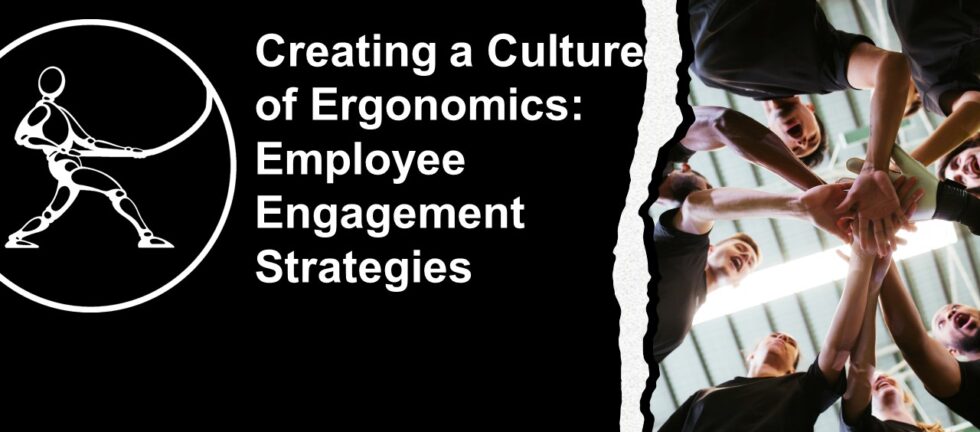Safety and Health Week is coming up in May, and our clients are calling on us to help them promote ergonomics in their workplaces. Fostering a culture of employee engagement in an ergonomics program involves several key strategies.
Training and education: These are two different, but related things. Education provides knowledge – supervisors and managers need to understand why fitting work to people helps the organization. Employees and ergo team members need to be taught the practical aspects of how to fit work to people. If you’re teaching the “why”, you’re providing education. If you’re showing and practicing the “how”, you’re engaged in training. At Taylor’d Ergo, we LOVE providing training, for employees, and for the key stakeholders in an ergonomics program. Our hazard-specific employee training is very hands-on, and the feedback is always great.
Employee involvement: Actively involve employees in the ergonomics program. Employees can participate in ergonomics assessments, identify hazards, suggest solutions, and provide feedback on the effectiveness of interventions.
During safety month, we can help you set up games to get people thinking about how ergonomics applies in their work. This year, our ergonomists are setting up game-based awareness events featuring 6 employees competing at “Perfection” – sure to attract attention and draw people into the event! Employees will compete over the course of the day for “most improved” scores, using ergonomics to help them improve their performance at the game. We’ve run similar ergo awareness events using typing games for office workers.
Leadership support: Secure support from company leadership for the ergonomics program. How? Leadership demonstrates commitment by allocating resources (time, money, accountability) and actively participating in ergonomic activities.
If you’re running ergonomics awareness activities, leadership should be out there participating! If you need a model for posters that you’re creating, ask your managers to volunteer!
Provide resources and tools: Ensure that employees have access to the resources and tools they need to implement ergonomics practices effectively. This may include ergonomic equipment (e.g., adjustable chairs, lift tables, PPE that fits), training, and ergonomics assessments. Create practical, task-specific ergo talks, and integrate them into your safety talk program. (Want more info about ergo talks? Fill in our survey, and we’ll keep you posted on our progress with this new initiative!)
Recognition and rewards: Recognize and reward employees who actively participate in the ergonomics program. Consider incentives such as “swag”, or gift cards, or public recognition for individuals or teams that demonstrate exceptional commitment to ergonomics. Talk about ergonomics as a regular part of your daily communications.
Continuous improvement: Continuously evaluate and improve the ergonomics program based on feedback, employee input, and changes in the work environment. Be open to trying new approaches to enhance the effectiveness of the program over time. Push the ergonomics process upstream into design and purchasing initiatives, so that new equipment is vetted before it is brought into the facility.
By implementing these strategies, companies can foster a culture of employee engagement in their ergonomics program, leading to improved health and safety outcomes, increased productivity, and enhanced employee satisfaction.


